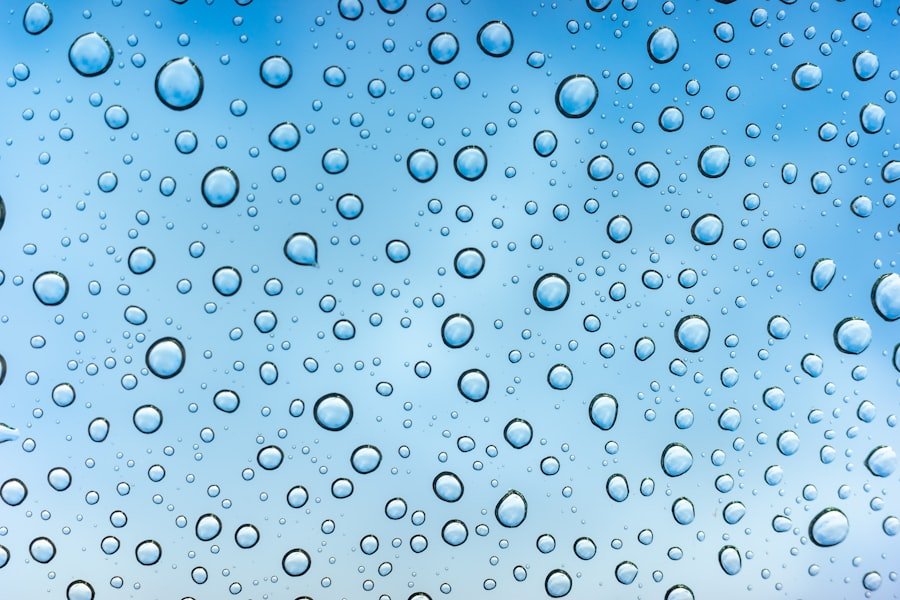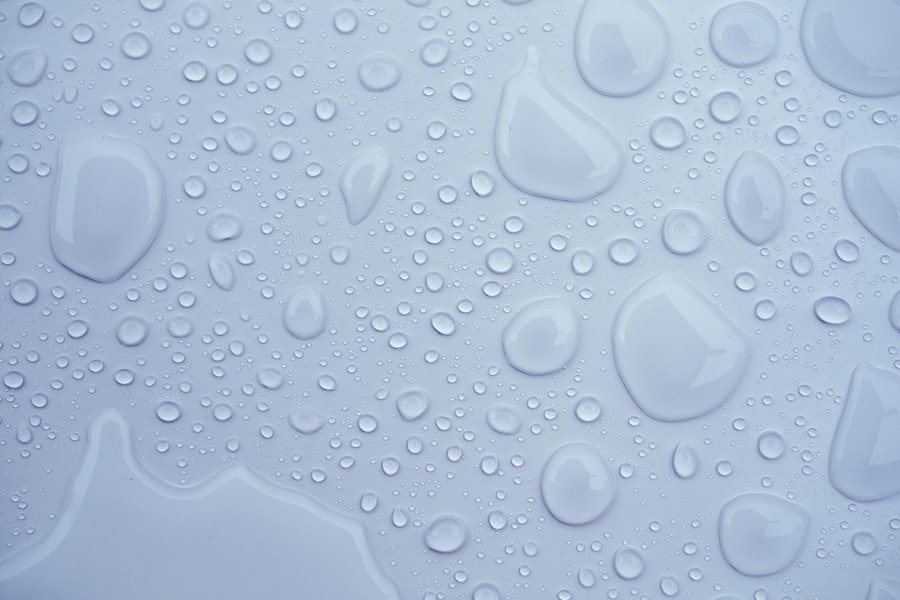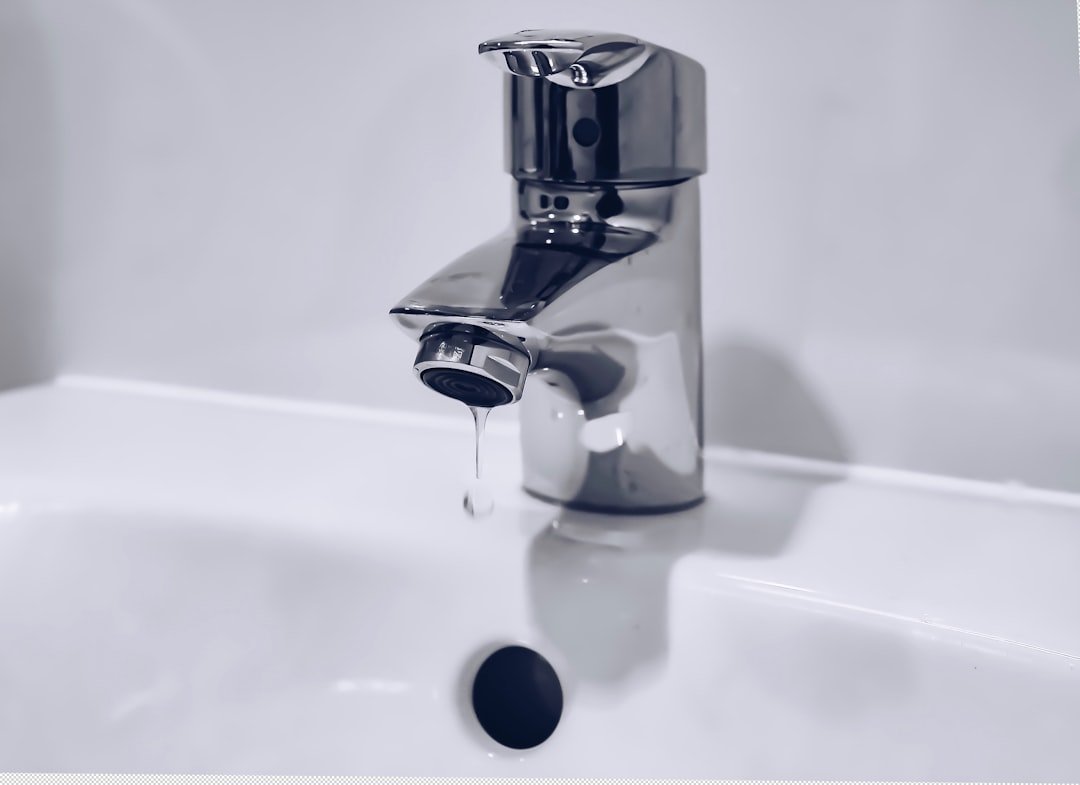Water spots on a car’s surface are a common nuisance that can detract from the vehicle’s overall appearance. These spots typically form when water droplets evaporate, leaving behind minerals and contaminants that were dissolved in the water. The most common culprits include calcium, magnesium, and other minerals found in hard water.
When these droplets dry on the surface of your car, they leave behind a residue that can appear as unsightly spots or streaks. The severity of the water spots can vary based on factors such as the type of water used, the duration of exposure, and the environmental conditions. In addition to being an aesthetic issue, water spots can also pose a risk to your car’s paintwork.
Over time, if left untreated, these mineral deposits can etch into the clear coat, leading to more significant damage that may require professional intervention. Understanding the nature of these spots is crucial for effective removal and prevention. Factors such as the type of water (tap water versus distilled), the climate in which you live, and how often your car is exposed to rain or washing can all influence the formation of water spots.
Recognizing these elements can help you take proactive measures to protect your vehicle.
Key Takeaways
- Water spots on your car’s surface are caused by mineral deposits left behind when water evaporates.
- Gather materials such as a water spot remover, microfiber towels, and a buffer for water spot removal.
- Prepare your car by washing and drying it thoroughly before starting the water spot removal process.
- Use a water spot remover product according to the manufacturer’s instructions for best results.
- Apply the water spot remover to your car in small sections and work in a circular motion for even coverage.
Gathering the Necessary Materials for Water Spot Removal
Before embarking on the task of removing water spots from your car, it is essential to gather all necessary materials to ensure a smooth and effective process. The primary item you will need is a specialized water spot remover product. These products are formulated to break down mineral deposits without damaging the car’s paint.
Look for options that are pH-balanced and safe for automotive finishes. Additionally, you may want to consider using a clay bar, which can help lift embedded contaminants from the surface of the paint. In addition to cleaning products, you will need several tools to assist in the removal process.
Microfiber towels are indispensable for both applying products and buffing the surface afterward, as they are gentle on paint and help prevent scratching. A soft applicator pad can also be beneficial for applying the water spot remover evenly across the affected areas.
Lastly, ensure you have access to clean water for rinsing and drying your car after treatment.
Preparing Your Car for the Water Spot Removal Process

Preparation is key when it comes to effectively removing water spots from your car’s surface. Start by washing your vehicle thoroughly with a high-quality car shampoo to remove any dirt, grime, or loose contaminants that may interfere with the spot removal process. Use a two-bucket method—one for soapy water and another for rinsing your wash mitt—to minimize the risk of scratching the paint.
Pay special attention to areas where water tends to pool, such as around windows and door handles, as these are often hotspots for water spot formation. Once your car is clean, dry it completely using a microfiber drying towel. This step is crucial because any remaining moisture can lead to new water spots forming during the removal process.
After drying, inspect the surface closely under good lighting conditions to identify all areas affected by water spots. This inspection will help you focus your efforts on the most problematic areas and ensure that you do not miss any spots during treatment.
Using a Water Spot Remover Product
| Product Name | Effectiveness | Ease of Use | Price |
|---|---|---|---|
| Water Spot Remover X | 4.5/5 | 4/5 | |
| Water Spot Remover Y | 4/5 | 4.5/5 | |
| Water Spot Remover Z | 3.5/5 | 3.5/5 |
With your car prepared and all materials gathered, it’s time to apply the water spot remover product. Begin by reading the manufacturer’s instructions carefully, as different products may have specific application methods or dwell times. Generally, you will want to apply a small amount of the remover onto an applicator pad or directly onto the affected area of your car’s surface.
It’s advisable to work in small sections to ensure thorough coverage and effective removal. As you apply the product, use gentle circular motions to work it into the paint. This technique helps break down the mineral deposits while minimizing the risk of scratching or damaging the clear coat.
Allow the product to sit for the recommended time specified by the manufacturer; this dwell time is essential for allowing the chemicals in the remover to effectively dissolve the mineral deposits. During this waiting period, avoid exposing the treated area to direct sunlight or wind, as these conditions can cause the product to dry too quickly and become less effective.
Applying the Water Spot Remover to Your Car
After allowing the water spot remover to dwell for the recommended time, it’s time to proceed with application techniques that maximize its effectiveness. Using a clean microfiber towel or applicator pad, gently buff the treated area in a circular motion. This action not only helps lift away dissolved minerals but also ensures that any remaining residue from the product is removed from your car’s surface.
For larger areas affected by multiple water spots, consider using a dual-action polisher equipped with a soft foam pad. This tool can significantly reduce physical effort while providing consistent pressure across the surface, leading to more uniform results. When using a polisher, start at a low speed to avoid overheating the paint and gradually increase as needed.
Always keep the pad moving to prevent any localized damage or burning of the clear coat.
Buffing and Polishing the Treated Areas

Once you have applied and worked in the water spot remover, it’s essential to follow up with buffing and polishing to restore your car’s shine and protect its finish. Using a clean microfiber towel, gently wipe away any remaining product residue from the treated areas. This step is crucial because leftover chemicals can lead to streaking or dullness if not properly removed.
After wiping down the surface, consider applying a high-quality polish or wax designed for automotive finishes. Polishing helps refine any micro-scratches that may have occurred during spot removal while enhancing gloss and depth in color.
Allow it to haze over before buffing it off with a clean microfiber towel. This two-step process not only improves aesthetics but also adds a layer of protection against future contaminants.
Rinsing and Drying Your Car
Following buffing and polishing, it’s important to rinse your car thoroughly to remove any remaining residues from both cleaning products and polishing compounds. Use clean water from a hose or pressure washer set on low pressure to avoid damaging your paintwork. Rinse from top to bottom, ensuring that all areas are adequately cleaned without leaving any soap or polish behind.
After rinsing, dry your vehicle using a soft microfiber drying towel or chamois cloth. It’s best to use a blotting technique rather than dragging the towel across the surface, as this minimizes friction and reduces the risk of introducing new scratches or swirls into your paintwork. Pay special attention to crevices and edges where water may accumulate; these areas are often overlooked but can harbor moisture that leads to new water spots if not dried properly.
Inspecting Your Car for Remaining Water Spots
Once your car is completely dry, take some time to inspect it closely for any remaining water spots or areas that may require additional attention. Use good lighting—preferably natural daylight—to help highlight any imperfections on your vehicle’s surface. Walk around your car methodically, checking each panel and angle carefully.
If you notice any stubborn spots that remain after your initial treatment, don’t be discouraged; this is not uncommon. Some mineral deposits may require additional applications of your chosen water spot remover or even different techniques altogether. Documenting which areas still show signs of water spots can help you focus your efforts more effectively during subsequent treatments.
Addressing Stubborn Water Spots with Additional Techniques
For particularly stubborn water spots that resist standard removal methods, consider employing additional techniques that may yield better results. One effective approach is using a clay bar treatment after applying a water spot remover. A clay bar can help lift embedded contaminants that may be contributing to persistent spotting issues.
To use a clay bar effectively, first lubricate the area with a clay lubricant or detail spray designed for this purpose. Then gently glide the clay bar over the surface in straight lines rather than circular motions; this technique helps avoid creating new scratches while allowing the clay to pick up contaminants effectively. After using the clay bar, rinse and dry your vehicle again before inspecting for any remaining spots.
Preventing Future Water Spots on Your Car
Preventing future water spots requires proactive measures that protect your vehicle’s finish from mineral deposits and environmental contaminants. One effective strategy is to regularly wash your car with distilled water instead of tap water; distilled water lacks minerals that contribute to spotting issues. If washing with tap water is unavoidable, consider drying your vehicle immediately after washing or rinsing it off with distilled water as a final step.
Another preventive measure is applying a high-quality sealant or wax after cleaning and polishing your car. These products create a protective barrier on your vehicle’s surface that repels water and contaminants while enhancing shine. Regularly maintaining this protective layer will not only keep your car looking great but also make future cleaning easier by preventing mineral buildup.
Maintaining a Clean and Spot-Free Car Surface
Maintaining a clean and spot-free car surface requires consistent care and attention over time. Establishing a regular washing schedule—ideally every two weeks—can help prevent dirt accumulation and minimize exposure to hard water spots from rain or sprinklers. When washing your vehicle, always use high-quality products specifically designed for automotive finishes; these products are formulated to be gentle yet effective in removing dirt without damaging paint.
In addition to regular washes, consider incorporating detailing sessions into your maintenance routine every few months. Detailing involves deep cleaning both interior and exterior surfaces while addressing any imperfections in paintwork through polishing or waxing. By investing time in maintaining your vehicle’s appearance regularly, you can enjoy a pristine finish free from unsightly water spots while prolonging its overall lifespan and value.
If you’re looking for more tips on car maintenance, you may also be interested in learning how to prevent water spots from forming on your vehicle. Check out this article on how to prevent pancake sticking in a pan for some helpful advice on keeping your car looking its best.
FAQs
What are water spots on a car?
Water spots on a car are mineral deposits left behind when water evaporates, leaving behind a residue of minerals such as calcium and magnesium. These spots can be unsightly and difficult to remove if left untreated.
How do water spots form on a car?
Water spots form on a car when water containing minerals such as calcium and magnesium evaporates, leaving behind a residue on the car’s surface. This can happen when water droplets dry on the car’s surface, especially in areas with hard water.
How can I remove water spots from my car?
There are several methods to remove water spots from a car, including using a vinegar solution, a commercial water spot remover, or a clay bar. It’s important to test any method on a small, inconspicuous area of the car first to ensure it doesn’t damage the paint.
Can water spots damage my car’s paint?
If left untreated, water spots can etch into the car’s paint and become more difficult to remove. It’s important to address water spots as soon as possible to prevent potential damage to the car’s paint.
How can I prevent water spots from forming on my car?
To prevent water spots from forming on your car, it’s important to dry the car thoroughly after washing and to avoid letting water droplets dry on the car’s surface. Using a soft, clean microfiber towel to dry the car can help prevent water spots from forming. Additionally, using a water softening filter when washing the car can help reduce the mineral content in the water, reducing the likelihood of water spots forming.

